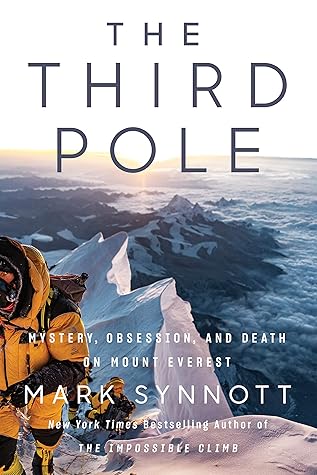More on this book
Community
Kindle Notes & Highlights
by
Mark Synnott
Started reading
July 22, 2022
Over the ensuing decades, hundreds of men and women have perished on the mountain’s slopes, most in the aptly named “Death Zone” above 8,000 meters (26,247 feet). Many of their bodies still litter the standard climbing routes. Every single dead climber was drawn to Everest for their own reasons—be it vanity, money, or some other obsession. Wouldn’t every one of them have asked at some point: Why am I here?
The American alpinist Mark Twight summed up the sentiment of many climbers and pundits alike when he wrote, “I think posers have polluted mountaineering. They replace skills and courage with cash and equipment. They make the summit, not the style, the yardstick of success . . . Now I’m embarrassed to call myself a climber, because close on the heels of the admission some dilettante will ask whether I’ve read Into Thin Air or done Everest.”
The first commercial client on Everest was Dick Bass, a Texas oilman and rancher who cofounded the Snowbird ski resort in Utah. In 1985,
No one knew if it was even possible for a human to survive at 29,000 feet, and indeed, many physiologists of the day were adamant that it was not. The precedent set in 1875 by three French scientists who took off in a hot-air balloon, hoping to set a new altitude record, was not encouraging. When the balloon landed in a field several hours after takeoff, the instruments showed that it had reached an altitude of 28,000 feet. But two of the three men were dead, with their faces blackened and mouths filled with blood. The third, who somehow survived, had gone deaf. Today, it is obvious that the
...more


